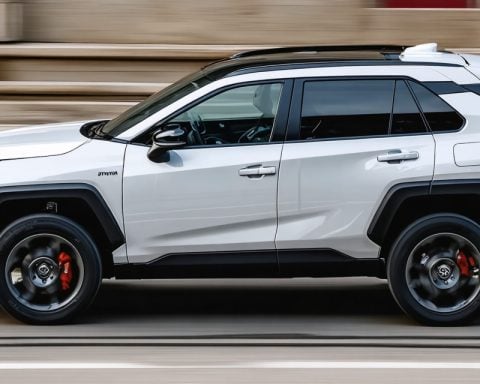Tata Motors’ Ambitious Plans for Electric Vehicle Growth
Despite a decline in overall electric vehicle sales during 2024, Tata Motors Limited (TML) remains hopeful for a robust recovery in 2025. Vivek Srivatsa, the Chief Commercial Officer of Tata Passenger Electric Mobility, outlined the company’s forward-looking strategy.
This year marked the launch of TPEM’s innovative Acti.ev architecture, setting the stage for future electric models. The Punch.ev stands out as the first vehicle built on this platform, aiming to make electric vehicles accessible by combining advanced features with affordability. Remarkably, by November 2024, 11 percent of all Punch sales were attributed to the Punch.ev.
The Nexon.ev lineup also saw enhancements, including the Nexon.ev 45 and the appealing Nexon.ev Red Hot #DARK edition. With a new 45-kWh battery, this model offers extended range and quicker charging, solidifying its competitive stance against conventional ICE vehicles.
To fortify the EV ecosystem, Tata Motors has collaborated with Shell and HPCL to expand the charging network, targeting over 22,000 stations within the next 18 months. In FY24, TML recorded an impressive 48 percent growth in electric vehicle sales.
Looking ahead, the Harrier.ev and Sierra.ev will soon enter production. As consumer awareness and infrastructure improve, Tata Motors is committed to achieving 30 percent EV penetration in its passenger vehicle lineup by 2030, fostering a community engaged in electric mobility.
Tata Motors Sets the Pace for Electric Vehicle Innovation in 2025
Overview of Tata Motors’ Electric Vehicle Strategy
Despite a temporary downturn in electric vehicle (EV) sales in 2024, Tata Motors Limited (TML) is optimistic about a significant rebound in 2025. The company’s ambitious plans, articulated by Vivek Srivatsa, the Chief Commercial Officer of Tata Passenger Electric Mobility (TPEM), demonstrate a strong commitment to shaping the future of electric mobility.
Key Features of TPEM’s Acti.ev Architecture
Tata’s innovative Acti.ev architecture, launched this year, is a game changer for their electric vehicle lineup. The Punch.ev, being the first vehicle to utilize this platform, is designed to integrate advanced technological features while maintaining affordability. This vehicle has already shown promising sales figures, with 11 percent of total Punch sales attributed to the Punch.ev by November 2024.
Enhancements in the Nexon.ev Lineup
The Nexon.ev series has also received significant updates, including the introduction of the Nexon.ev 45 and the striking Nexon.ev Red Hot #DARK edition. The new 45-kWh battery not only extends the vehicle’s range but also allows for faster charging. This positions the Nexon.ev lineup as a competitive alternative to traditional internal combustion engine (ICE) vehicles, aligning with consumer demand for better efficiency and sustainability.
Strategic Partnerships for Charging Infrastructure
In a bid to strengthen the electric vehicle ecosystem, Tata Motors has partnered with Shell and HPCL to expand its charging network. The ambitious goal is to establish over 22,000 charging stations in India within the next 18 months. This initiative is crucial for promoting EV adoption among consumers who may be hesitant due to range anxiety or limited charging options.
Growth Metrics and Future Outlook
In fiscal year 2024, Tata Motors reported an impressive 48 percent growth in electric vehicle sales. Looking to the future, the company is gearing up for the production of the Harrier.ev and Sierra.ev, which are expected to attract a broader customer base as electric mobility becomes increasingly mainstream.
Industry Trends and Predictions
With rising awareness about environmental issues and sustainability, the shift towards electric mobility is expected to accelerate. Tata Motors aims for a target of 30 percent electric vehicles in its passenger vehicle lineup by 2030, which would signify a major step towards a greener automotive industry. Industry analysts predict that as infrastructure improves and consumer confidence grows, companies like Tata will capitalize on this trend to lead the market.
Pros and Cons of Tata Motors’ Electric Strategy
Pros:
– Strong growth in EV sales and investment in technology.
– Strategic collaborations for improving infrastructure.
– Diverse product offerings catering to different consumer segments.
Cons:
– Market challenges such as competition from established and new players.
– Dependence on the development of charging infrastructure.
– Initial costs associated with new technologies.
Conclusion
Tata Motors is positioning itself as a pioneer in the electric vehicle market with a clear strategy focused on innovation, affordability, and infrastructure development. As we progress into 2025, the company’s initiatives will likely play a vital role in shaping India’s electric mobility landscape. For more information, visit Tata Motors.













